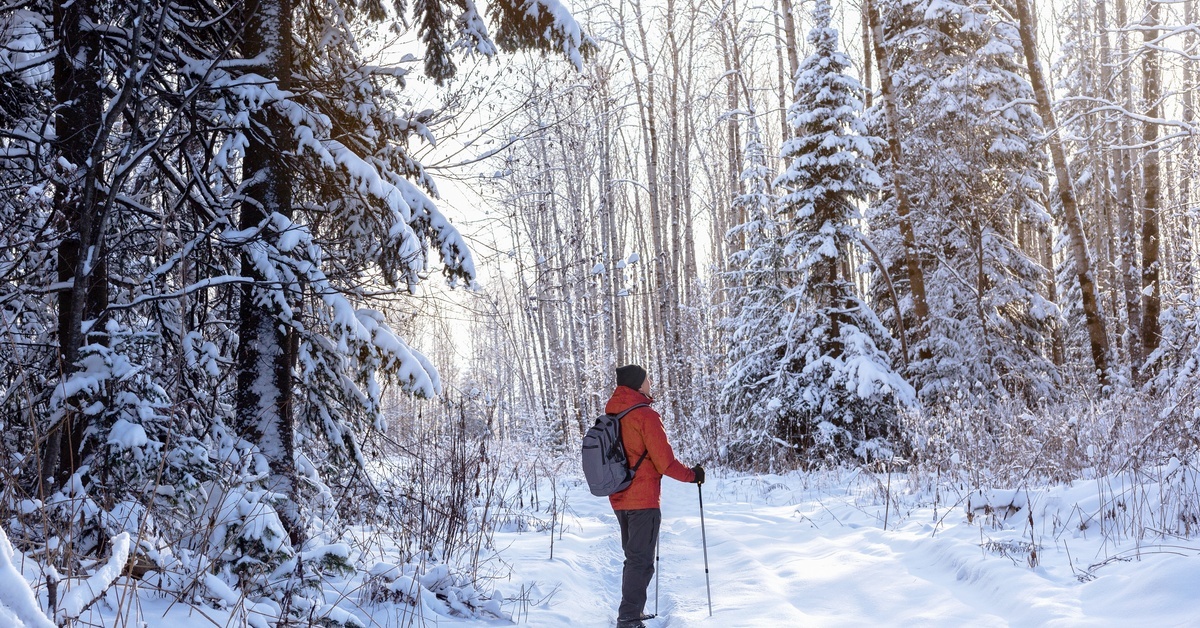Posted by Admin on Aug 12th 2025
What To Wear for Hiking in Any Weather or Terrain
Hiking is a thrilling way to immerse yourself in the great outdoors. The changing scenery, fresh air, and sense of accomplishment after a long trek make it one of the most rewarding outdoor activities. However, preparing for any weather or terrain is essential to enjoying your adventure, as every experienced hiker knows. A key element of preparation is knowing what to wear on the trail. The right clothing ensures comfort, safety, and adaptability to the environment around you. Knowing what to wear for hiking in any weather or terrain will keep you safe while out on the trail.

Layering Is Key
Layering is one of the most fundamental principles of dressing for hiking in any weather or terrain. Layering helps you regulate your body temperature as conditions change, and you’ll want to invest in some real outdoor clothes; you don’t want to rely on your normal wear. There are typically three components to a proper layering system: a base layer, a middle layer, and an outer layer.
Base Layer
The base layer is your first line of defense against moisture. Its purpose is to wick sweat away from your skin to keep you dry. Choose merino wool or synthetic materials, such as polyester. You’ll want to steer clear of cotton materials, as cotton can absorb moisture and tends to dry slowly, leaving you cold and uncomfortable.
Middle Layer
The middle layer provides insulation and helps your body retain heat. A fleece jacket or a lightweight down or synthetic insulated jacket works well as a middle layer. The choice depends on the weather; opt for thicker insulation in cold climates and a thinner fleece jacket in milder climates.
Outer Layer
The outer layer (shell) protects you from wind, rain, or snow. A waterproof and breathable jacket with Gore-Tex or other high-quality membranes is ideal. Look for options with pit zips or ventilation to manage heat efficiently in warmer or wet conditions.
Weather-Specific Clothing
Weather can be highly unpredictable, especially in mountainous or remote areas. Here’s how to prepare your clothing for different weather conditions.
Hot Weather
Prioritize lightweight and breathable fabrics when hiking in hot weather. Opt for moisture-wicking shirts, shorts, and pants made from synthetic materials. Long-sleeved shirts and pants with UV protection are ideal for protecting yourself against the sun. A wide-brimmed hat and sunglasses should also be part of your attire to shield your head and face from harmful UV rays. Don’t forget a lightweight neck gaiter or bandana for added sun protection around your neck.
Cold Weather
Hiking in cold weather requires warmth and insulation. Start with a thermal base layer, followed by an insulating middle layer, such as fleece or down. A windproof and waterproof jacket is critical for your outer layer, as cold air and precipitation can quickly sap your body heat. Thermal hiking pants designed for winter conditions, along with warm gloves, a beanie, and insulated socks, are essential. Make sure your clothing is snug but allows freedom of movement for maximum comfort.
Wet and Rainy Conditions
A reliable rain jacket and waterproof hiking pants are your best friends in wet weather. These will keep you dry and comfortable while preventing you from becoming chilled by wet clothing. Pack a waterproof backpack cover or dry sacks to protect your gear. Wearing quick-drying synthetic or merino wool underlayers ensures that even if you get damp, you’ll remain warm.
Windy Conditions
Wind can amplify the effects of cold weather and make hiking challenging. A windbreaker or windproof softshell jacket provides excellent protection against gusts. Layer underneath as needed, and wear a buff or face mask to protect your face from harsh winds.
Snowy and Icy Terrain
Dress in multiple warm layers during snowy hikes, making sure all fabrics are moisture-wicking and waterproof. Thick, insulated hiking boots with proper traction are essential for navigating icy paths. Add gaiters to prevent snow from getting into your boots. Consider wearing crampons or microspikes for better grip on slippery surfaces.
Terrain-Specific Considerations
The terrain you plan to hike on also affects what you should wear. Different surfaces and landscapes require specific adjustments to your hiking wardrobe.
Rocky Terrain
Hiking in rocky areas demands sturdy footwear with good ankle support and grippy soles. Choose pants made of durable materials to resist scratches from sharp rocks. A helmet may be necessary for steep, rocky scrambles or areas prone to falling debris.
Forested Trails
Forests often have dense vegetation, so wearing long sleeves and pants is crucial to protect against scratches, insect bites, and poison ivy. Lightweight, breathable fabrics ensure you stay comfortable while moving through shaded areas.
Desert Terrain
Deserts present unique challenges due to extreme heat and sun exposure. Opt for loose-fitting, light-colored clothing that covers your skin to prevent sunburn. A breathable sun hat with a wide brim and a moisture-wicking neck gaiter offers additional protection.
Alpine Environments
High-altitude environments are known for rapid weather changes. Dress in layers and carry extra clothing in case of cold temperatures or sudden snow. Don’t forget to pack insulated gloves, a warm hat, and UV-protective gear to combat the intense sun exposure in these areas.
Wet or Marshy Areas
Waterproof boots with high ankle coverage are a must for hiking in marshy areas. Pair them with waterproof gaiters to keep your feet dry. Quick-drying pants and socks made from synthetic materials will ensure you remain comfortable even if you get wet.
Footwear
No matter the weather or terrain, wearing the right footwear is non-negotiable. Choose hiking boots or shoes tailored to your trail conditions. Consider the following options:
- Hiking boots provide better ankle support and are ideal for uneven or challenging terrain.
- Trail runners are lightweight and good for smoother trails or short hikes.
- Waterproof footwear is essential for wet or snowy conditions.
- Sandals can be a good option for easy trails in hot weather, but you should avoid them on technical terrain.
Always pair footwear with moisture-wicking socks. Carry an extra pair of socks to change into if your feet get wet, and especially for multi-day hikes.

Accessories for All Weather
Every hiker should include the following items in their wardrobe or backpack, regardless of the conditions:
- Hats for sun protection or warmth.
- Gloves for cold conditions or hand protection.
- Sunglasses to shield your eyes from UV rays and glare.
- Gaiters to keep debris, snow, or water from entering your boots.
- Buff or neck gaiter for wind, cold, or sun protection.
- Watch or GPS for timekeeping and navigation.
Show Up Prepared
Choosing what to wear for hiking in any weather or terrain can greatly impact your experience on the trail. By selecting appropriate layers, weather-specific outdoor clothes, and gear for the terrain, you can tackle any outdoor adventure. Remember, proper planning and smart clothing choices increase your comfort and enhance your safety in challenging environments. Keep yourself safe while out on the trail.

